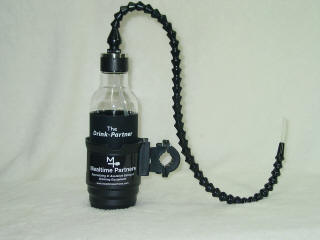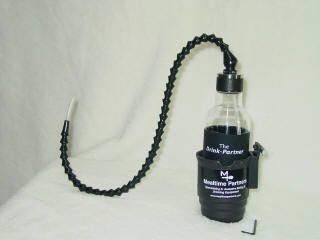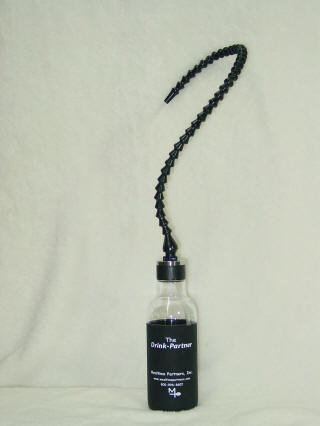November 2019 Independent Eating and Drinking Newsletter
| Independent Eating and Drinking are Wonderful |
 |
| November Newsletter Topics: |
|
| Subscribe to Newsletters |
What is the vestibular system? It is often referred to as the “sixth sense”. The other traditionally identified senses are: smell, taste, touch, hearing, and sight. The vestibular system provides information to the brain about the body’s movement, balance and location in space. It is located in the inner ear along with the cochlea, which is the part of the inner ear that is responsible for hearing. The vestibular system is made up of three semicircular ducts, or canals which are interconnected tubes located in the innermost part of each ear. The canals, which are part of the vestibular labyrinth, are each responsible for sensing different head movements: nodding up and down, shaking side to side, and moving left to right. Additionally, in the vestibular labyrinth, are the otolith organs which sense forward and backward head movement and gravitational forces.
The vestibular system works in coordination with proprioceptors, which are mechanosensory neurons located throughout the body in the muscles, tendons, and joints. There are many different types of proprioceptors and depending upon the type of proprioceptor, they provide different information about movements, including direction, speed, weight being born, etc., to the central nervous system which integrates this information with that coming from the eyes and vestibular system.
Simply put, the body, when it works properly, is aware of all movements, large or small, the movement speed, and the burden that is being born. With this information, the body is able to execute all of its movement functions without conscious effort. Imagine stepping outside when there is ice on the ground. As soon as your body feels that it is slipping, it will make every effort to correct its balance, and additionally extend the hands and arms in anticipation of possibly falling. This is an example of the vestibular and proprioceptive systems at work in an unusual situation. Most of the time it does not need to swing into gear in an emergency situation, but conducts routine activities like walking, sitting, eating, drinking, etc.
The explanation provided above is in an effort to explain why seating and positioning are so important to successful, enjoyable eating. Many of Mealtime Partners Newsletter articles discuss the value of stable seating during meals. Most adults are able to stabilize themselves on any type of chair, because chairs are designed to allow an average sized adult to sit on the seat, rest their back against the backrest, and place their feet on the floor at the same time. In this position there are many proprioceptors providing feedback to the brain about how the body should be kept in an upright position. However, if the same adult sat on a bar stool that had no back or foot rest, their body would have to work much hard to keep the trunk and head vertical and stable because fewer body parts are being supported and thus less information about the body position is being fed back to the brain via proprioceptive information. Additionally, the vestibular system has to work harder to keep track of the body’s location in space because of the reduction in body support. The same situation occurs for children. They are often put in a booster seat or high chair that provides little back support, and no foot support. This is especially common in restaurants. With little support, the child will become restless quite quickly and may not be able to sit and enjoy their meal for an extended time, and to be able to eat enough food to sustain them until their next meal. Lack of support places a greater burden upon the body to maintain its vertical position.
The need for good support during eating is especially relevant to people who do not have good muscle control and who experience poor eye hand coordination. More information on this and related topics will be provided in future Newsletters.
| The Mealtime Partner Dining System | |
| For individuals who are unable to feed themselves because of limited or no hand and/or arm function, the Mealtime Partner provides them with a way to eat independently. This lets them experience an enjoyable mealtime that is totally under their control. They can choose what they eat for each bite and pace their eating to suit their own needs and desires. | |
|
|
|
| The
Mealtime Partner Dining System can be positioned to meet the
specific needs of each user. The user does not have to
adjust their position to eat using the device because the
Partner’s flexible mounting systems permit positioning to
fit the user's needs, making mealtimes a comfortable,
relaxed experience, with the user positioned safely
for eating. The Mealtime Partner empowers its user to eat what they want, when they want it. The Mealtime Partner Dining System is quick and easy to learn and has no complicated programming requirements. Each Dining System comes with a complete training video on DVD so new users and caregivers can learn to use it in just a few minutes. There are no other assistive dining systems that meet the needs of the users, like the Mealtime Partner. For more information about this device, click on this link. To talk to a representative, call us at 800-996-8607, or email us at: info@mealtimepartners.com and we will be happy to assist you in selecting the best system to meet your needs. |
The Drink-Partner Drinking System
The holidays are upon us and it is time to consider gifts for friend and loved ones. Mealtime Partners offers several different drinking systems that can be mounted on wheelchairs and beds that would make a wonderful gift for someone who has difficulties lifting or holding a cup. One of our most popular hands-free drinking systems is the Drink-Partner drinking system and the following article provides details about it so that you might consider it as a special gift for your loved one!
For more than a decade Mealtime Partners has developed and marketed hands-free drinking systems that accommodate a wide range of user needs and desires. Knowing how important maintaining hydration is, and yet how difficult it is to attain for some people, these products have become just as important to us as our original product: the Mealtime Partner Dining System. Our goal is to provide dining and drinking systems that are flexible, reliable, and easy to use.
There are two different types of mounting systems that are available for Drink-Partner systems. One Drink-Partner Drinking System attaches to both manual wheelchairs that have tubular frames (or handles), and to powered wheelchairs that also have tubular frames. The other type fits on powered wheelchairs that have slide-track rails (either standard track or UniTrack). In this way the Drink-Partner Drinking System can be mounted to most wheelchairs regardless of the type of wheelchair, thus making the Drink-Partner available for many users.

|

|
| Figure 1: The Drink-Partner Drinking System for Manual Wheelchairs |
Figure 2: The Drink-Partner Drinking System for Wheelchairs with Slide-Track |
Typically, the cup holder is mounted to the back of the wheelchair and the bottle inserted into it. The flex tubing guides the drink tube over the user’s shoulder and positions the tip of the drink tube close to the user’s mouth. The Drink-Partner shown in figure 1 is attached to the wheelchair handle or rail by a clamp that is an integral part of the cup holder. The Drink-Partner shown in figure 2 uses a T-Nut that fits into the slide-track to mount it.
The Drink-Partner bottle is clear (i.e., transparent) to enable the person using it to see what is in the bottle and how full it is. Additionally, because it is clear, it is easy for the person who cleans it to see that it is truly clean. The lower part of the bottle is covered by an insulated sleeve. The cap on the top of the bottle is a screw cap with a metal cover on its outside. This is important as the metal significantly reduces the possibility of the cap breaking, which is an ongoing problem for bottles that have plastic caps without reinforcement.
Integrated into the Drink-Partner cap is a vibration resistant, 24-inch length of ball and socket tubing (i.e., flex tubing) which holds the drinking tube (i.e., the straw). The ball and socket tubing positions the end of the drinking tube in an accessible location for the user to be able to drink from it with ease. To purchase the Drink-Partner products, click on the selected photograph.
 |
| Figure 3: The Drink-Partner Bottle |
.
|
Did you know? Did you know that clinical trials are now being carried out to test the ease of function of a “tongue drive system” for operating wheelchairs and computers? Scientists at the School of Electrical and Computer Engineering at the Georgia Institute of Technology have developed a system that uses a magnet that is the size of a grain of rice that is attached to the user’s tongue with tissue adhesive. As the tongue is moved, magnetic field sensors that are mounted in wireless headphones sense the motion of the magnet. A computer, mounted on the wheelchair, collects and interprets the data. The data is able to replace the instructions generated by a joystick and thus allow the user to drive a wheelchair with only the movement of their tongue. Additionally, the same method can be used to operate a computer mouse and allow control over computer games, etc. Click here for more information about this project. |